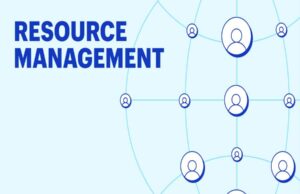Every business needs to have adequate standards and procedures in place regarding data governance. Data governance ensures that data is managed appropriately and effectively to make it as reliable, secure, and useful as possible. This blog post will discuss why data governance is essential, what elements should be included in your data governance policy, such as Microsoft Purview and Profisee MDM, and how to ensure that the policy is followed.
The Benefits Of Establishing Data Governance Standards
Data governance has a wide range of benefits for businesses. First and foremost, it helps ensure the accuracy of your data by providing clear guidelines on how to handle it. With proper data governance policies, businesses can be confident that their data is being managed correctly from collection through analysis.
Additionally, practical data governance standards help protect you from potential legal issues by reducing the risk of exposing sensitive information or having unauthorized access to your systems. Well-defined standards also help reduce costs associated with maintaining reliable IT infrastructure and managing large amounts of data.
Elements of an Effective Data Governance Policy
When establishing a data governance policy for your business, there are several elements you should consider including:
- A description of the roles and responsibilities related to managing your organization’s data;
- Policies on who has access to what type of information;
- Rules for collecting and storing customer information;
- Guidelines for updating existing records
- Processes for dealing with obsolete information;
- Regulations regarding security measures such as encryption;
- Procedures for responding to inquiries about using or misusing company information.
Once you have established these elements within your policy, you can begin implementing them throughout your organization.
How To Establish Your Data Governance Policy
1. Defining Your Objectives
The first step in establishing a practical data governance framework is defining the objectives you want to achieve with your data. What are your goals? Are you looking to streamline operations or reduce costs? Maybe you want to increase customer satisfaction or provide better insights into customer behavior. Once you have identified your specific objectives, you can develop the processes and procedures necessary to meet them.
Additionally, you should consider the specific needs of your organization. What type of data do you currently use, and what will you use in the future? Are there any regulations or industry standards that need to be considered? Developing a policy tailored to your business will help ensure it is practical and compliant with all applicable laws.
2. Creating Policies and Procedures
Once your objectives are defined, developing policies and procedures for managing your data assets is time. You should create policies for collecting, storing, using, sharing, securing, archiving, and deleting data. These policies should be documented so that everyone in the organization understands how they should handle their data assets.
3. Ensure Compliance with Your Data Governance Policy
Once you have established an effective policy for governing your organization’s use of its data, all employees must be aware of and follow these rules. To do this effectively, regular training sessions should be held so that everyone understands the importance of following proper procedures when dealing with customer information or other sensitive matters related to managing organizational data.
Additionally, technology solutions such as user authentication systems can be implemented to help ensure compliance with your policy by limiting access only to those authorized users who need specific types of information at any given time.
Conclusion
Establishing effective data governance standards and procedures is essential for any business looking to remain competitive in today’s digital landscape. The first step is defining your objectives so that you know what steps need to be taken to achieve them. Once these objectives have been established, developing policies and procedures is essential for ensuring compliance with relevant laws and providing guidance on how employees should handle their data assets correctly. Microsoft Purview and Profisee MDM is the best option to assist your business and help you manage your data securely while achieving the desired outcomes more efficiently. Visit their website today!














